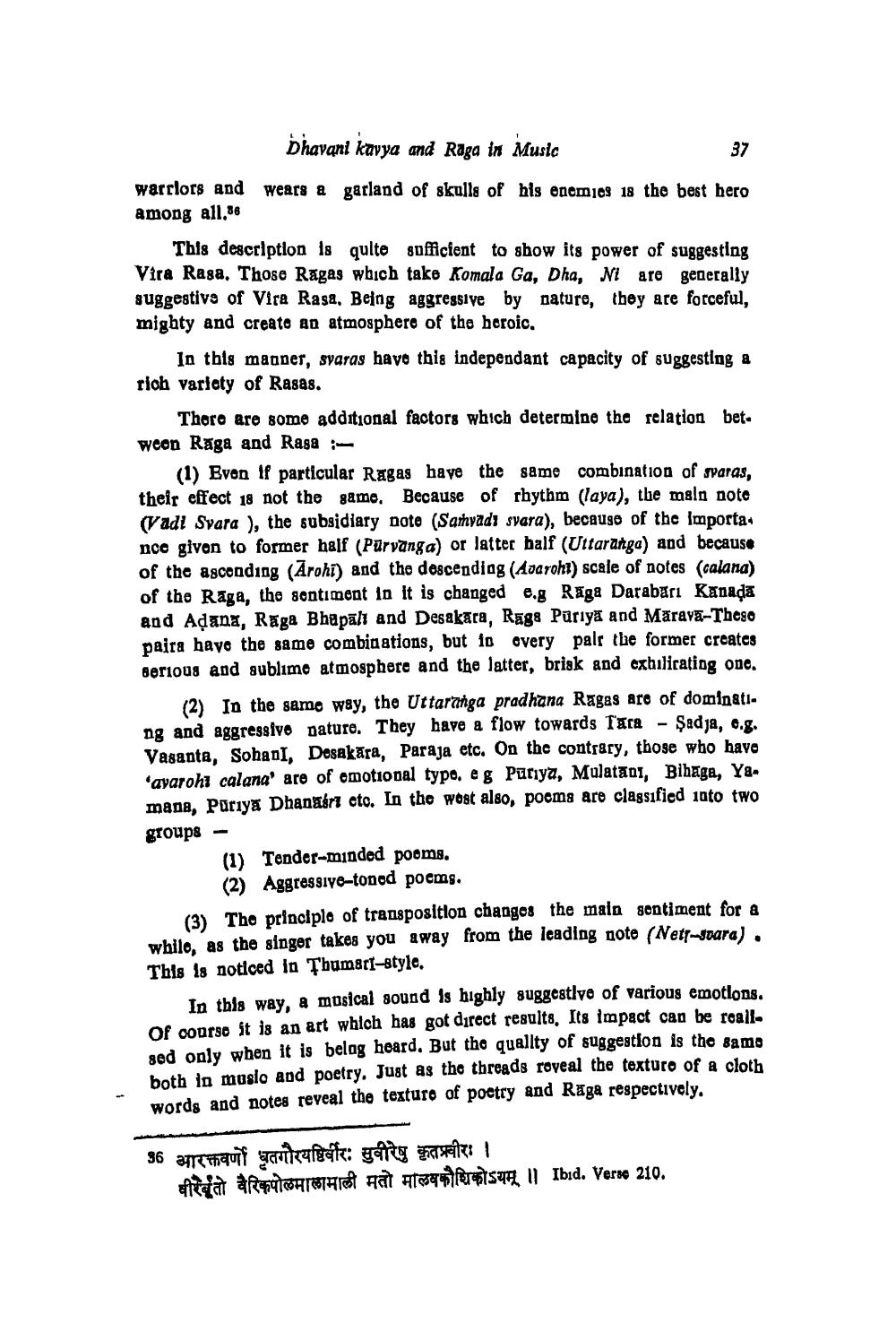________________
Dhavani kavya and Raga in Music
37
warrlors and wears a garland of skulls of his enemies 18 the best hero among all.36
This description is quite sufficient to show its power of suggesting Vira Rasa. Those Ragas which take Komala Ga, Dha, Ni are generally suggestive of Vira Rasa. Being aggressive by nature, they are forceful, mighty and create an atmosphere of the heroic.
In this manner, svaras have this independant capacity of suggesting a rich variety of Rasas.
There are some additional factors which determine the relation bet ween Raga and Rasa :
(1) Even if particular Ragas have the same combination of svaras, their effect 18 not the same. Because of rhythm (laya), the main note (Vadi Svara), the subsidiary note (Samvadi svara), because of the importa. nce given to former half (Purvanga) or latter half (Uttaranga) and because of the ascending (Arohi) and the descending (Avaroht) scale of notes (calana) of the Raga, the sentiment in it is changed e.g Raga Darabari Kanada and Aḍana, Raga Bhupal and Desakara, Raga Puriya and Marava-These paira have the same combinations, but in every pair the former creates serious and sublime atmosphere and the latter, brisk and exhilirating one.
(2) In the same way, the Uttaranga pradhana Ragas are of dominating and aggressive nature. They have a flow towards Tara - Şadja, e.g. Vasanta, Sohanl, Desakara, Paraja etc. On the contrary, those who have 'avarohi calana' are of emotional type, eg Puriya, Mulatani, Bihaga, Ya. mana, Puriya Dhanair etc. In the west also, poems are classified into two groups
(1) Tender-minded poems. (2) Aggressive-toned poems.
(3) The principle of transposition changes the main sentiment for a while, as the singer takes you away from the leading note (Net-svara). This is noticed in Thumsri-style.
In this way, a musical sound is highly suggestive of various emotions. Of course it is an art which has got direct results. Its impact can be reallsed only when it is belag heard. But the quality of suggestion is the same both in music and poetry. Just as the threads reveal the texture of a cloth words and notes reveal the texture of poetry and Raga respectively.
36 आरक्तवर्णो 'धृतगौरयष्टिर्वीरः सुवीरेषु कृतप्रवीरः ।
वीरे तो वैरिकपोलमालामाली मतो मालवकौशिकोऽयम् ॥ Ibid. Verse 210.




